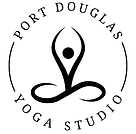
FAQs
Don’t be discouraged if you find that you are unable to perform some of the asanas fully to begin with, Yoga is progressive, as you continue your practice you can only improve. Always remember Yoga is not competitive – the extent of flexibility achieved does not necessarily determine success. Success is measured by the degree of inward attention paid to the body and the mind whilst in the pose. Your best Yoga on any given day is the best Yoga for you.
Please follow instructions carefully and do not anticipate, even when you become familiar with the postures. Careful attention to body placement and alignment is essential if you are to gain the full benefits of the asanas; this may take some time to develop. Never try to exceed your limitations, as this will only hinder your progress. If you proceed with an awareness of your own capabilities, with patience and moderation you will be far more successful than if you attempt to do too much, too soon.
Relieves physical tension, especially back pain Lowers blood pressure Helps with strength, flexibility, range of motion and balance Calms the mind, reduces stress and anxiety Increases metabolism and energy Can help reduce depression, panic attacks and insomnia Strengthens the immune system Slows heart rate Strengthens the spine Increases blood circulation Helps to detoxify system Improves function of internal organs including digestion and elimination Relieves physical tension Promotes a state of relaxation and inner contentment
In most postures you will be instructed to breathe deeply and slowly, without straining, so please do not hold your breath unless instructed to do so. Always breath in and out through the nose, unless otherwise instructed, as this not only filters out many impurities and germs in the air, but also helps you maintain important control over the length and smoothness of your breath.
A thin rubber ‘sticky’ mat or a thin foam rubber mattress covered with a large towel or a folded blanket makes an ideal surface. If you do not have a mat, one can be provided for you
Your clothing should not be restricting, in order to permit complete freedom of movement. Try not to wear belts, watches, glasses, hair ornaments and jewellery. Practice in clean, bare feet.
Yoga postures should be practised on an empty stomach – two to three hours after a main meal, and an hour or so after a light meal or snack.
If you are in any doubt regarding the effects of the Yoga techniques upon you, if you are elderly, if you are obese or if you have a history of illness or disability, it is always advisable to check with your doctor before proceeding.
Please advise your Yoga Instructor If you have had an operation, confinement, injury or special medical care within the last six months, if you are pregnant, are currently under heavy medication or if you suffer from any of the following:
Asthma or other breathing problems Epilepsy Stomach Ulcers Past or present neck or back injuries Circulatory problems
Arthritis High or low blood pressure Any heart problems Thyroid problems Osteoporosis
